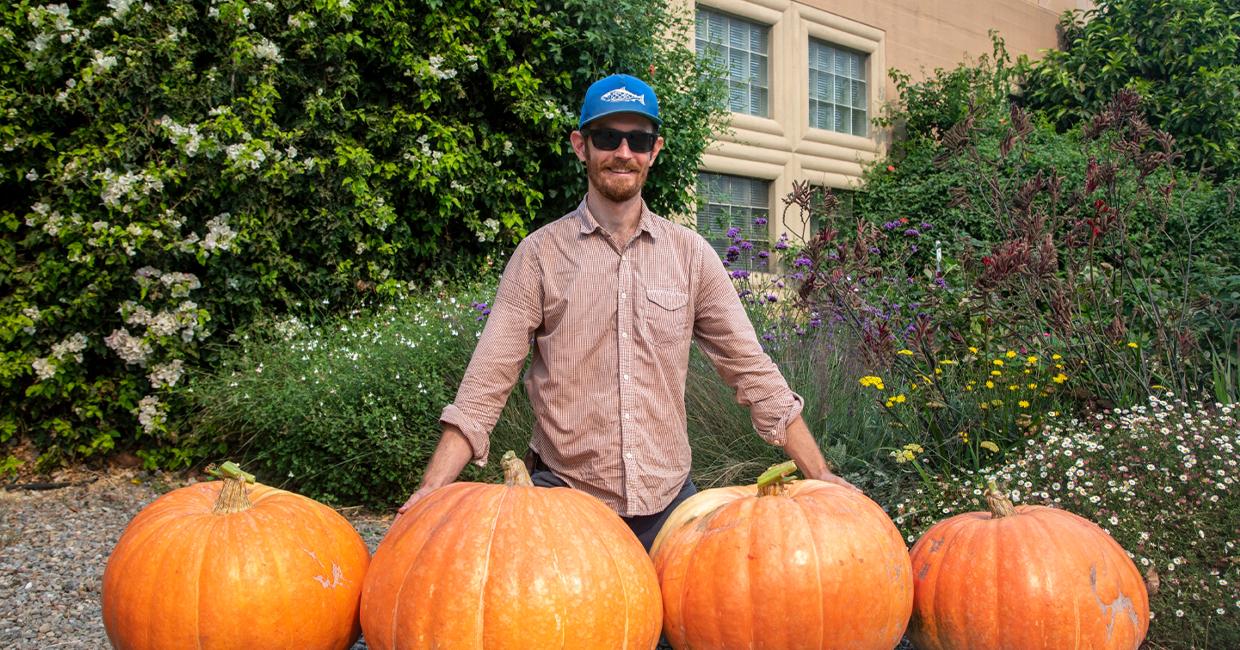Ghosts, goblins, and witches bring the fright of Halloween night. But nothing does it quite like the jack-o-lantern’s light.
These giant pumpkins were not created from the magical wand of Cinderella’s Fairy Godmother but instead were grown by the team at the SFPUC's Wastewater Resource Recovery Division. The orange gourds were grown using biosolids.
Biosolids are nutrient-rich organic materials that are captured for reuse at a wastewater treatment facility. Wastewater contains several valuable resources and during the treatment process clean water, energy, and soil nutrients (fertilizer) can be created for reuse. The captured soil nutrients are called biosolids. A team at the SFPUC decided to grow pumpkins to show how valuable biosolids are when used as a fertilizer.
"Growing massive flowers and giant pumpkins helps people see with their own eyes just how beneficial biosolids can be," explained Ryan Batjiaka, Environmental Specialist. "The SFPUC provides an amazing service to the City by treating its wastewater, but at the same time we are working to recover valuable resources which can be used to address California’s environmental challenges."
To grow a big pumpkin, you need water, soil nutrients, and energy – the same resources that the SFPUC is working towards recovering at its treatment facilities. In the pumpkin’s case, the energy comes directly from the sun. However, at the SFPUC’s wastewater treatment facilities, energy will eventually be captured in the form of biogas. Wastewater is full of nutrients that plants need. This should be no surprise because plants are what people are eating, digesting, and flushing down the toilet to an SFPUC wastewater treatment plant. Through a biological process, the SFPUC captures the nutrients in wastewater and converts them into a fertilizer called biosolids. Plants are grown using biosolids as a fertilizer and benefit from the full range of essential plant nutrients.
The SFPUC has a critical role to play in making sure the City’s wastewater is treated and is working to get to a place where it can recover more resources which will help address California’s environmental challenges. Learn more about biosolids.


